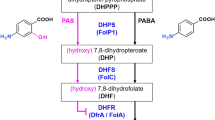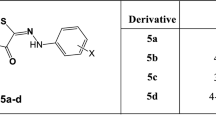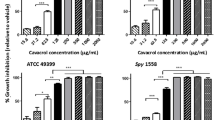Abstract
SOME derivatives of salicylic acid possess antitubercular properties, the most important of such substances being the well-known p-aminosalicylic acid used by Lehmann1. Nevertheless, numerous investigations seem to indicate that most of the antitubercular compounds contain amino-groups. Hydroxamic acids can be used as reagents to introduce primary amino-groups into an aromatic nucleus, as found by Turski2. I have recently confirmed this3 by using diacetyl-aceto-hydroxamic acid (O N N-triacetylhydroxylamine) as an aminating agent. Upon the assumption that this compound would combine the curative properties of some salicylic acid derivatives with those of amino-compounds, the hydroxamic acid group being in a way a potential amino-group, it seemed worth while to test the value of salicylhydroxamic acid as an antitubercular agent.
This is a preview of subscription content, access via your institution
Access options
Subscribe to this journal
Receive 51 print issues and online access
$199.00 per year
only $3.90 per issue
Buy this article
- Purchase on Springer Link
- Instant access to full article PDF
Prices may be subject to local taxes which are calculated during checkout
Similar content being viewed by others
References
Lehmann, J., Lancet, 250, 15 (1946).
Turski, J. S., Brit. Pat. 564610 (1944).
Urbański, T., J. Chem. Soc., 3374 (1949).
Jeanrenaud, Ber., 22, 1272 (1889).
Author information
Authors and Affiliations
Rights and permissions
About this article
Cite this article
URBAŃSKI, T. Salicylhydroxamic Acid as an Antitubercular Agent. Nature 166, 267–268 (1950). https://doi.org/10.1038/166267b0
Issue Date:
DOI: https://doi.org/10.1038/166267b0
This article is cited by
-
Derivatives of eleostearic acid
Journal of the American Oil Chemists' Society (1976)
-
Une nouvelle famille de composés tuberculostatiques: les amidoximes
Experientia (1954)
-
New Hydroxamic Acids as Antitubercular Agents
Nature (1952)
Comments
By submitting a comment you agree to abide by our Terms and Community Guidelines. If you find something abusive or that does not comply with our terms or guidelines please flag it as inappropriate.



